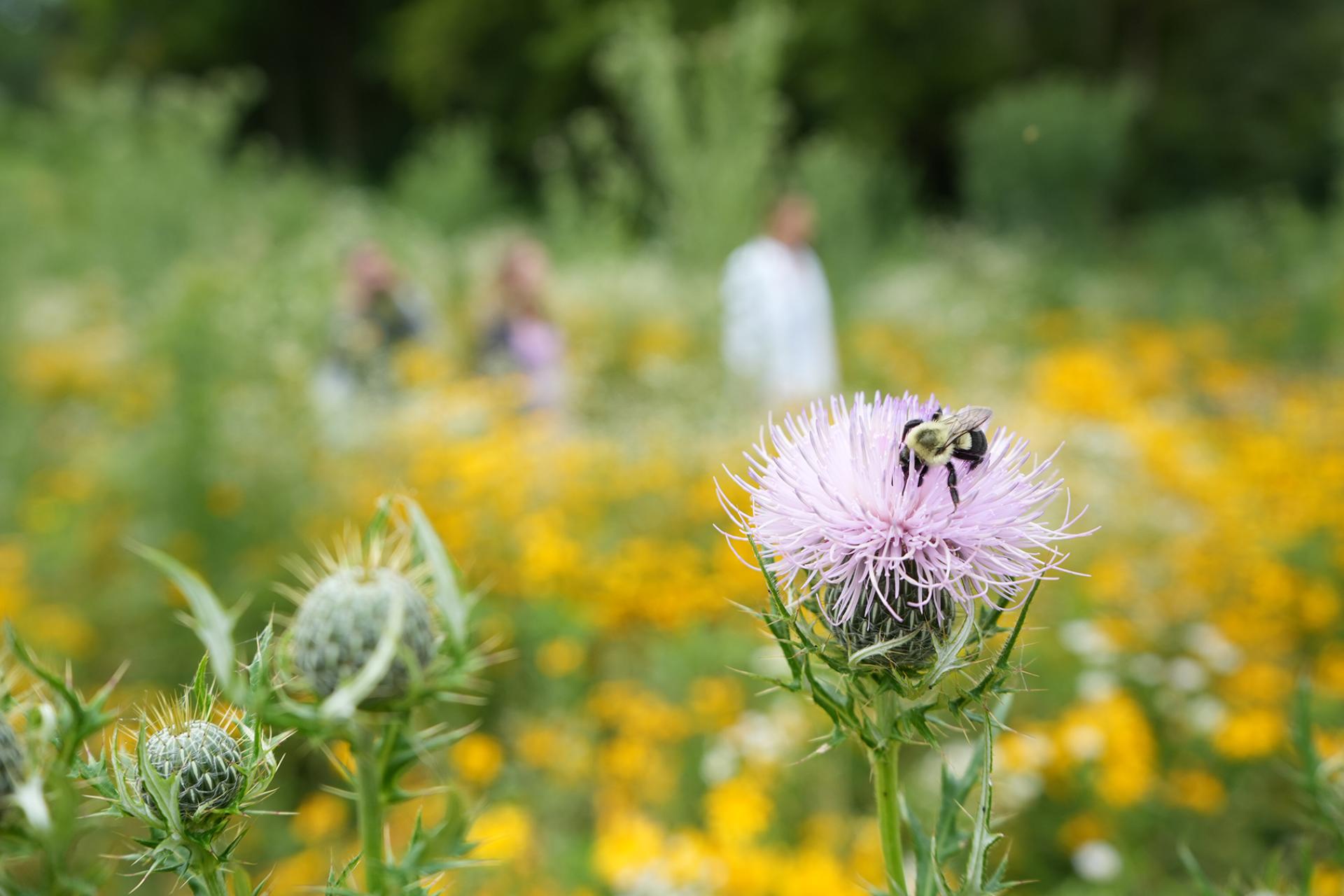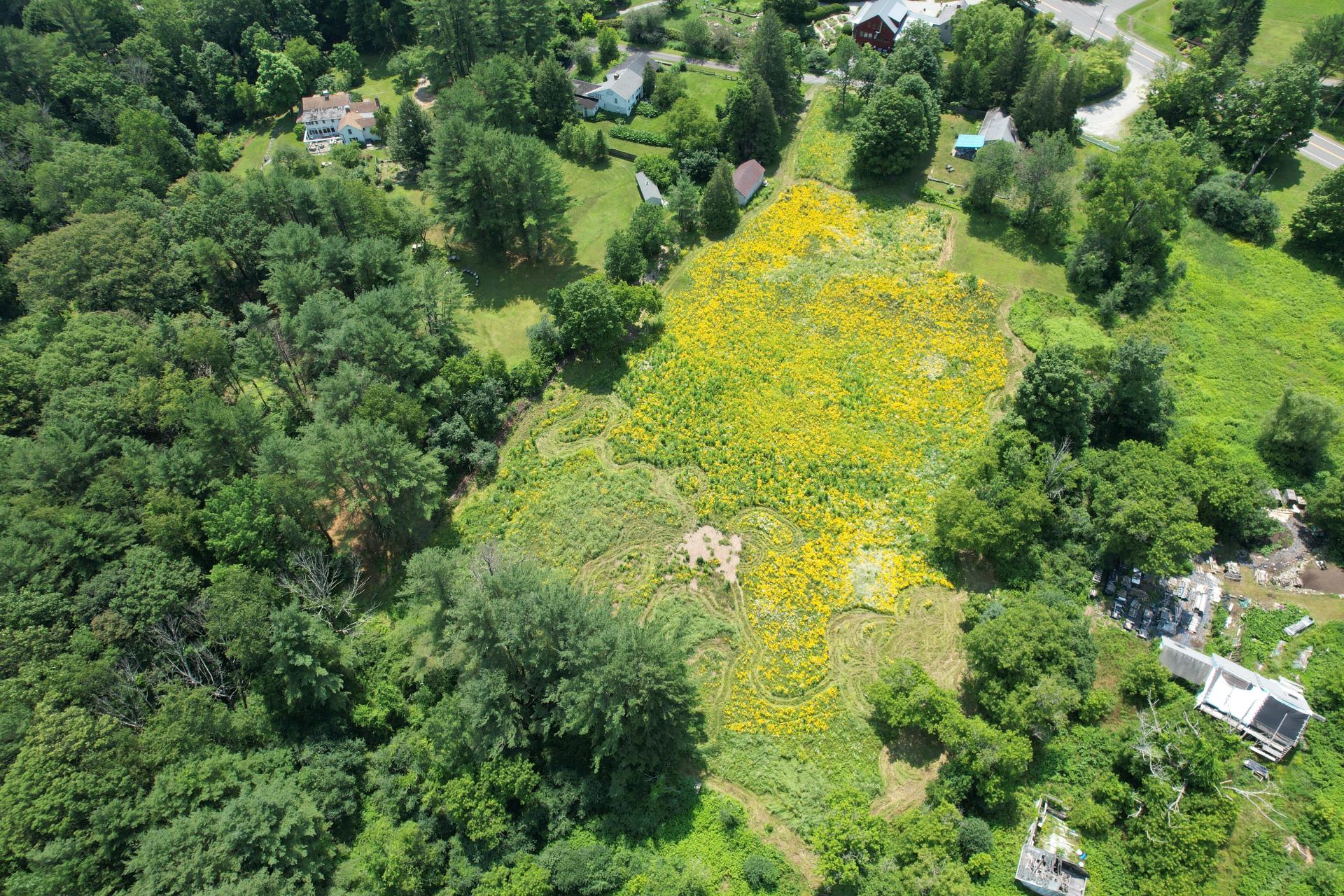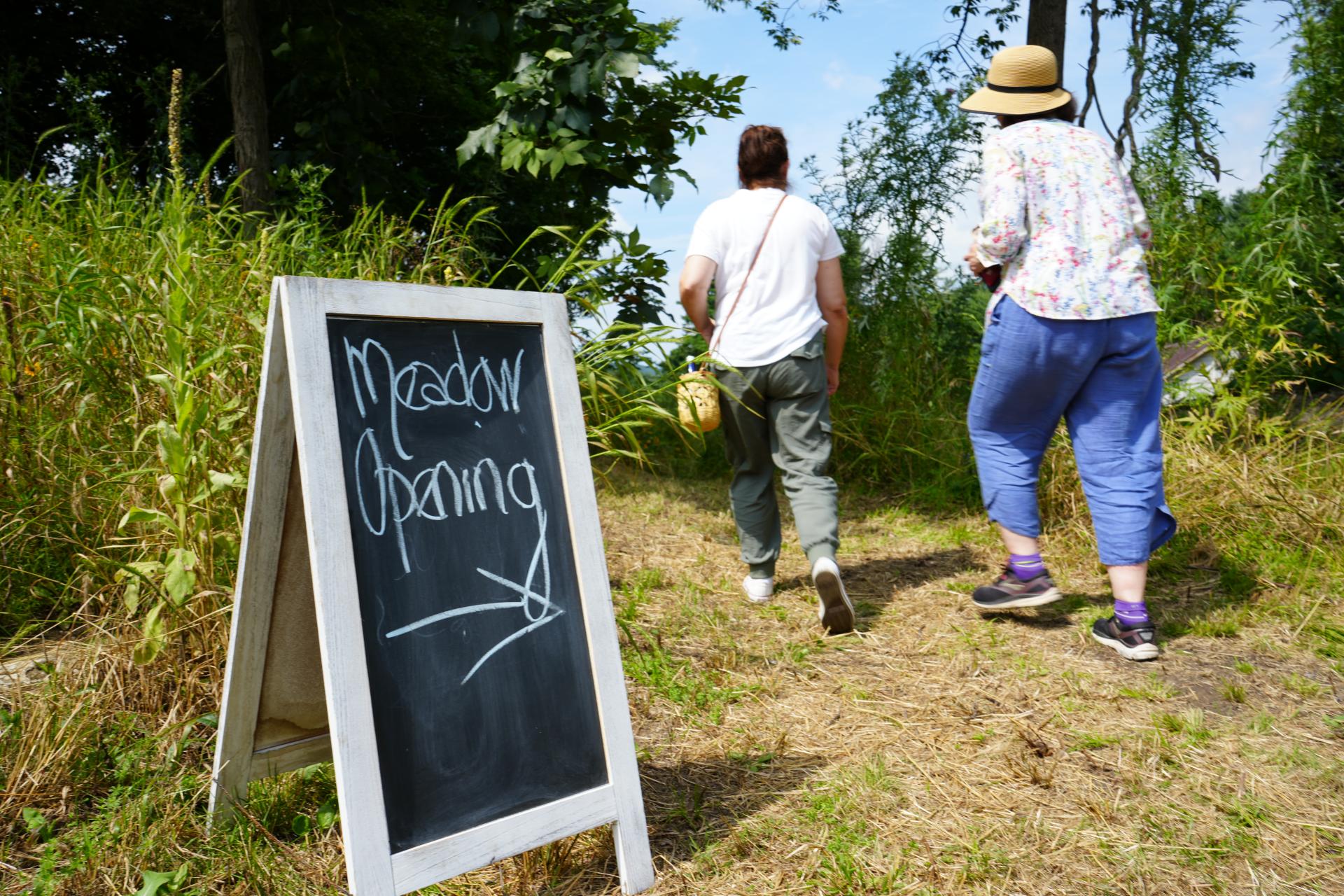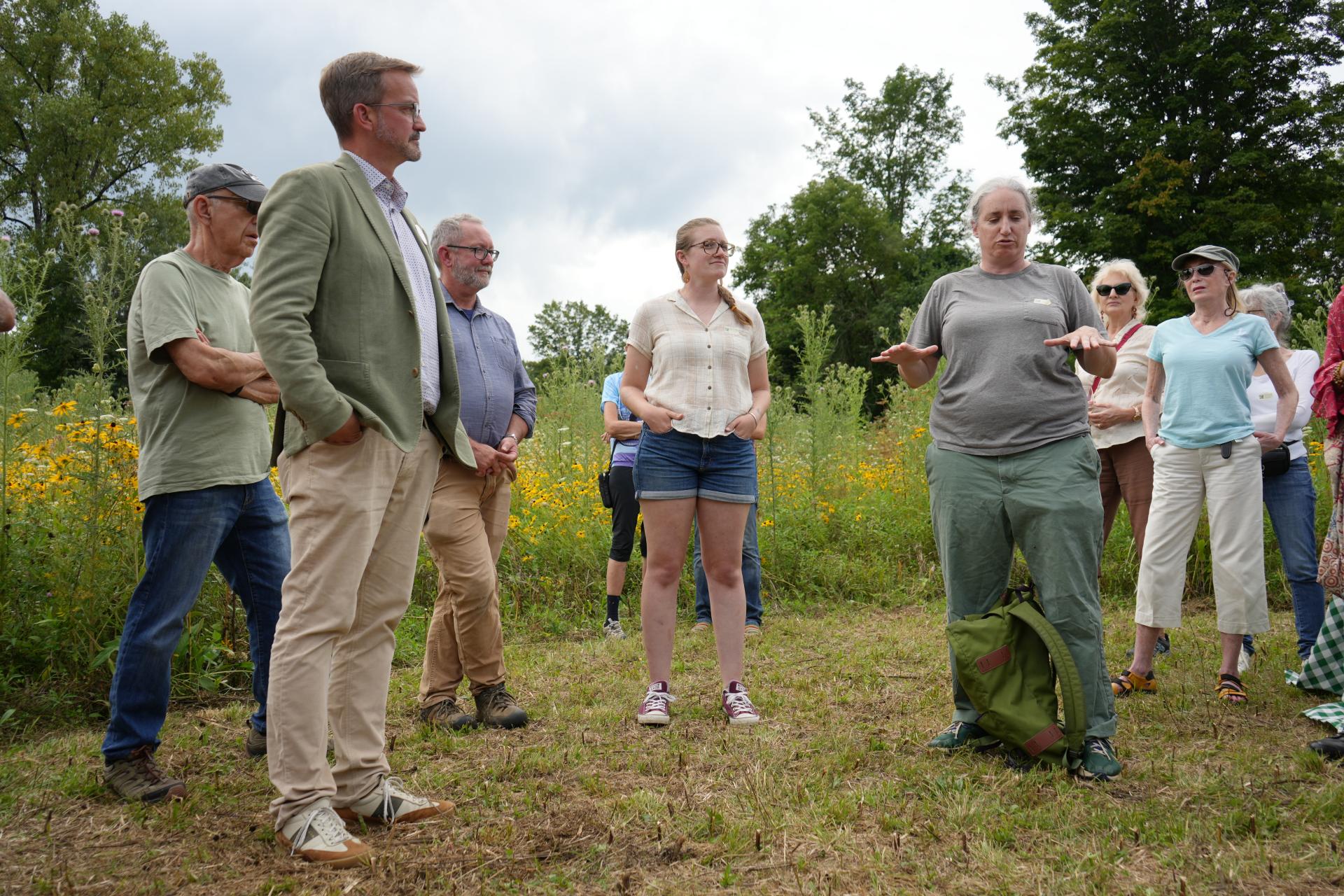You are here
Introducing Our New Wildflower Meadow
Introducing Our New Wildflower Meadow
Before he removed the “CLOSED” sign, before he helped welcome the crowds, Eric Ruquist stood in the middle of a field of wildflowers at Berkshire Botanical Garden and acknowledged he had a case of the jitters.
Like a producer of a Broadway show on opening day, Eric, BBG’s director of horticulture, would be overseeing the public debut of a three-year, meticulously choreographed creation: a 2.5-acre native-dominated meadow. Now, vibrant with densely interwoven native flora and carved with walking trails, the meadow was ready for its close-up. Eric breathed deeply and acknowledged, “You know, it looks pretty good.”
Just before 2:30 p.m. on Saturday, Aug. 12, down came the “CLOSED” sign. Up went the “MEADOW OPENING” sign. In came a crowd for the inauguration of BBG’s newest showpiece. Dubbed “The Wildflower Meadow,” the thumbs-up-shaped acreage did not disappoint.
“It’s wonderful, beautiful,” said Charlotte Fairweather, a longtime BBG volunteer.
“It’s exactly what we were hoping for,” said Marli Milano, a field operations coordinator for the Pennsylvania-based Larry Weaner Landscape Associates, the group hired by BBG to oversee the establishment of the meadow.
Let’s be clear: This could’ve all been a disaster. When BBG first took ownership of the land back in 2019, there were no guarantees. The property first had to be divested of a motley throng of invasives, including garlic mustard, bittersweet and knotweed. Then, in November 2021, a carefully curated mix of seeds was broadcasted out upon the bare land. The seed — 200 seeds per square foot — are native to the Berkshires or from the Northeast.
In the spring and summer of 2022, invasive weeds could’ve gotten a running start on the nascent native meadow, potentially smothering out the stated goal. But Eric and his horticulture crew followed a strict mowing schedule timed to slay weeds while encouraging root growth for the newly emergent meadow.
A visit in June, 2022, from Larry Weaner and Marli helped allay any concerns. They identified what they had hoped to find, including encouraging quantities of horsemint, partridge pea, smooth aster, golden Alexander, white beardtongue, Black-eyed Susan, wild quinine, pasture thistle, butter weed, anise hyssop, tickseed, and sedge species.
Still, a year ago, the meadow, sequestered behind a “CLOSED” sign, wasn’t much to look at. As expected, to the casual observer, it remained more of a dream of fields than a field of dreams.
Eschewing the ongoing use of herbicides, and being scrupulous not to disturb the soil, Eric and his crew continued to deal with stubborn invasives by means of scheduled mowings, string trimmers and hand clippers. Last winter he had “August 2023” marked on his calendar as the time when the meadow might show signs of florification such that it could be opened to the public.
And he was right.
By August, the land — which includes an open meadow, a ridge and a wetland plateau — was blanketed with the yellows and purples of blooming black-eyed Susan and pasture thistle.
At the meadow opening on Aug. 12, Marli was joined by a colleage, Rebecca Kagle, a restoration ecologist who had helped spearhead the project. The two explained to the 100 or so attendees what they were looking at.
“You’re seeing a second-year meadow,” Rebecca said. “A second-year meadow is like a teenage meadow.”
By that, she meant, that while the meadow is still in its awkward stage — and weeds must be regularly monitored and addressed — there’s more than meets the eye. Namely, underneath that blanket of thistle and Black-eyed Susan are fledgling plants that will make themselves known in the coming weeks, months and years.
“Our ultimate goal is a low-maintenance, highly diverse pollinator garden that is pleasurable to walk in,” Rebecca said.
Mike Beck, BBG’s co-executive director, told the crowd that plans are afoot to create educational signage and to incorporate the meadow into BBG’s educational programs. The meadow, he said, reinforces BBG’s longstanding initiative promoting native plantings. Such plantings are aesthetically rich, require far less carbon-heavy upkeep and attract wildlife, including bees, butterflies and other pollinators. These pollinators — under threat over the last century by the proliferation of unnatural, chemically sustained, green toupee turf grass — are essential for the propagation of many plants and for sustaining a healthy, natural habitat.
“This beautiful meadow constitutes 10 percent of BBG’s land, so it adds a big footprint to the Garden for our guests to enjoy,” said Co-Executive Director Thaddeus Thompson. “More than that, it is arguably the most ecologically beneficial purpose to which we could put this land. It’s a win-win for our visitors and our environment. Looking ahead, we’re excited to conduct citizen-science projects in this space, monitoring and assessing the health of the meadow and the fauna that it supports.”
Just moments before the opening, Eric was out at the far end of the meadow when he gave the universal sign for shush, his finger pressed to pursed lips.
“You hear that?” he said.
He was drawing attention to a sound not heard at this spot for decades: a deep, low hum, a sleepy, surround-sound of bees in flight.
The pollinator equivalent of praise and applause.
Help Our Garden Grow!
Your donation helps us to educate and inspire visitors of all ages on the art and science of gardening and the preservation of our environment.
All donations are 100 percent tax deductible.








